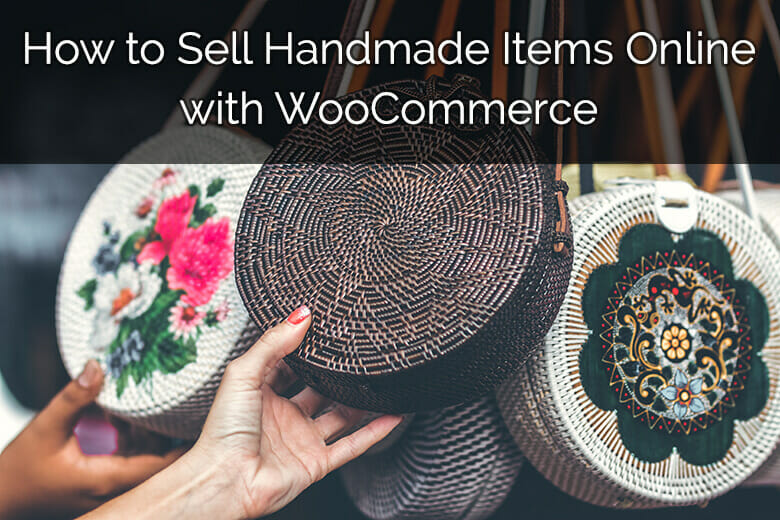Discover the Best Platforms to Showcase Your Unique Creations
Selling handmade goods online has become a lucrative business for many artisans and craftspeople. With the rise of e-commerce and online marketplaces, it’s now easier than ever to turn your handmade hobby into a thriving online business. However, with so many sites to sell handmade goods available, it can be overwhelming to choose the right platform to showcase your unique creations.
Online marketplaces offer a range of benefits for handmade goods sellers, including increased visibility, customer reach, and convenience. By selling on established platforms, you can tap into a existing customer base and benefit from the site’s marketing efforts, rather than having to build your own website and attract customers from scratch. Additionally, online marketplaces often provide a range of tools and services to help you manage your sales, including payment processing, shipping, and customer support.
Some popular online marketplaces for selling handmade goods include Etsy, eBay, and Amazon Handmade. These platforms have already established a large customer base and offer a range of features and tools to help you succeed. However, it’s essential to choose a platform that aligns with your business goals and target audience.
When selecting a platform to sell your handmade goods, consider factors such as fees, target audience, and product categories. You should also research the platform’s policies and guidelines to ensure they align with your business needs. By choosing the right platform, you can increase your chances of success and build a thriving online business.
How to Choose the Perfect Online Marketplace for Your Handmade Goods
With numerous sites to sell handmade goods available, selecting the right online marketplace can be a daunting task. To ensure success, it’s essential to consider several factors, including fees, target audience, and product categories. By evaluating these criteria, you can choose a platform that aligns with your business goals and increases your chances of success.
Fees are a critical consideration when selecting an online marketplace. Different platforms charge varying fees for listing, transaction, and payment processing. For example, Etsy charges a listing fee of $0.20 per item, while eBay charges a final value fee ranging from 8% to 12.5%. Amazon Handmade, on the other hand, charges a flat fee of 15% on all sales.
Target audience is another crucial factor to consider. Each platform has a unique customer base, and it’s essential to choose a platform that aligns with your target market. For instance, Etsy is known for its focus on vintage and handmade items, while eBay is a more general marketplace with a broader range of products. Amazon Handmade, meanwhile, is geared towards artisans and craftspeople who create unique, handmade items.
Product categories are also an important consideration. Different platforms specialize in specific product categories, and it’s essential to choose a platform that aligns with your product offerings. For example, Redbubble is a great platform for artists and designers who create print-on-demand products, while Zibbet is geared towards makers of handmade and vintage items.
By carefully evaluating these factors, you can choose the perfect online marketplace for your handmade goods and increase your chances of success. Remember to research each platform’s policies and guidelines to ensure they align with your business needs.
Top Sites to Sell Handmade Goods: A Comprehensive Review
When it comes to selling handmade goods online, there are numerous sites to choose from. In this review, we’ll compare and contrast four popular online marketplaces: Etsy, Redbubble, Zibbet, and Storenvy. Each platform has its unique features, fees, and target audiences, making it essential to choose the right one for your handmade goods.
Etsy is one of the most popular sites to sell handmade goods, with over 90 million active buyers. The platform is known for its focus on vintage and handmade items, making it an ideal choice for sellers who create unique, handmade products. Etsy charges a listing fee of $0.20 per item, as well as a transaction fee of 3.5% on all sales.
Redbubble is another popular platform for selling handmade goods, particularly for artists and designers who create print-on-demand products. The site offers a range of products, including t-shirts, stickers, and phone cases, and charges a base price for each product, plus a commission on all sales.
Zibbet is a marketplace that specializes in handmade and vintage items, making it an excellent choice for sellers who create unique, handmade products. The platform charges a listing fee of $0.20 per item, as well as a transaction fee of 3.5% on all sales.
Storenvy is a social marketplace that allows sellers to create their own online store and connect with customers. The platform is ideal for sellers who want to build a strong brand and community, and charges a transaction fee of 10% on all sales.
When choosing a site to sell handmade goods, it’s essential to consider the fees, target audience, and product categories. By selecting the right platform, you can increase your chances of success and build a thriving online business.
What Makes a Successful Handmade Goods Seller: Tips and Strategies
When it comes to selling handmade goods online, success is not just about creating high-quality products, but also about showcasing them effectively and providing excellent customer service. In this section, we’ll explore the key factors that contribute to a successful handmade goods seller, including product photography, pricing, and customer service.
Product photography is a crucial aspect of selling handmade goods online. High-quality images can help showcase your products in the best possible light, making them more appealing to potential customers. When taking product photos, consider using good lighting, a clean background, and a clear focus on the product. You can also use lifestyle shots to show your products in use, which can help customers visualize how they can use them.
Pricing is another important factor to consider when selling handmade goods online. You’ll need to balance the cost of materials, time, and other expenses with the price that customers are willing to pay. Research your competition and understand the market demand to determine the optimal price for your products.
Customer service is also essential for building a successful online business. Respond promptly to customer inquiries, and provide clear and concise information about your products and policies. Consider offering refunds or exchanges to build trust with your customers and encourage repeat business.
Building a strong brand and community is also crucial for success in the handmade goods market. Develop a unique brand identity and voice, and engage with your customers through social media and other channels. This can help you build a loyal following and increase word-of-mouth marketing.
Finally, consider offering exceptional customer service by providing personalized support, responding to customer inquiries, and going above and beyond to meet customer needs. This can help you build a positive reputation and increase customer loyalty.
Maximizing Your Online Presence: SEO and Marketing Tips
Once you’ve set up your online store on one of the many sites to sell handmade goods, it’s essential to optimize your online presence to attract more customers and increase sales. In this section, we’ll explore the importance of search engine optimization (SEO), social media marketing, and email marketing in driving traffic to your online store and boosting sales.
SEO is a crucial aspect of online marketing, as it helps your online store rank higher in search engine results pages (SERPs). To optimize your online store for SEO, focus on using relevant keywords in your product titles, descriptions, and tags. You can also use tools like Google Analytics to track your website’s traffic and identify areas for improvement.
Social media marketing is another effective way to drive traffic to your online store and increase sales. Platforms like Instagram, Facebook, and Pinterest are ideal for showcasing your handmade goods and connecting with potential customers. Use high-quality images and engaging captions to showcase your products, and consider running social media ads to reach a wider audience.
Email marketing is also a powerful tool for driving traffic to your online store and increasing sales. Build an email list by collecting contact information from customers and potential customers, and use email marketing software to create and send targeted campaigns. Consider offering exclusive discounts or promotions to your email subscribers to encourage repeat business.
In addition to these marketing strategies, consider using influencer marketing to reach a wider audience. Partner with influencers in your niche to showcase your handmade goods and reach a larger audience. You can also use content marketing to create valuable and informative content that attracts potential customers and establishes your brand as an authority in your niche.
Finally, consider using paid advertising to drive traffic to your online store and increase sales. Platforms like Google AdWords and Facebook Ads offer targeted advertising options that can help you reach a wider audience and drive more sales.
Real-Life Examples of Successful Handmade Goods Sellers
While selling handmade goods online can be a challenging and competitive market, many sellers have found success and built thriving online businesses. In this section, we’ll share inspiring stories of successful handmade goods sellers who have leveraged online marketplaces to showcase their unique creations and reach a wider audience.
One example is Emily, a jewelry maker who sells her handmade pieces on Etsy. Emily’s shop, “Sparkle and Shine,” has gained a loyal following and has been featured in several publications. She attributes her success to her attention to detail, excellent customer service, and effective marketing strategies.
Another example is David, a woodworker who sells his handmade furniture on eBay. David’s shop, “Woodworking Wonders,” has become a go-to destination for customers looking for unique and high-quality wooden pieces. He credits his success to his ability to create high-quality products, provide excellent customer service, and effectively market his shop.
These examples demonstrate that success in the handmade goods market is possible with the right combination of skills, marketing strategies, and online platforms. By leveraging sites to sell handmade goods, such as Etsy and eBay, sellers can reach a wider audience, build a loyal customer base, and create a thriving online business.
Other successful handmade goods sellers have also found success on platforms like Redbubble, Zibbet, and Storenvy. These platforms offer a range of features and tools that can help sellers showcase their products, connect with customers, and build a successful online business.
By learning from the experiences of these successful handmade goods sellers, you can gain valuable insights and inspiration to help you build your own thriving online business.
Overcoming Common Challenges: Troubleshooting Tips for Handmade Goods Sellers
As a handmade goods seller, you may encounter various challenges that can impact your online business. In this section, we’ll address common challenges faced by handmade goods sellers and provide troubleshooting tips and solutions to help overcome these obstacles.
One common challenge is competition. With so many sites to sell handmade goods, it can be difficult to stand out from the crowd. To overcome this challenge, focus on creating high-quality products that are unique and distinctive. Use high-quality images and detailed product descriptions to showcase your products and differentiate yourself from competitors.
Another challenge is pricing. Setting the right price for your handmade goods can be tricky, as you need to balance the cost of materials and time with the price that customers are willing to pay. To overcome this challenge, research your competition and understand the market demand for your products. Consider offering discounts or promotions to attract more customers and increase sales.
Shipping is another common challenge faced by handmade goods sellers. To overcome this challenge, consider using shipping carriers that offer reliable and affordable services. Use packaging materials that are sturdy and protective, and consider offering free shipping or discounted rates for bulk orders.
Finally, consider using analytics tools to track your website’s traffic and sales. This can help you identify areas for improvement and make data-driven decisions to optimize your online business.
By addressing these common challenges and using the troubleshooting tips and solutions provided, you can overcome obstacles and build a thriving online business selling handmade goods.
Conclusion: Turning Your Passion into a Profitable Online Business
Turning your handmade hobby into a thriving online business requires dedication, hard work, and a willingness to learn and adapt. By choosing the right platform, creating high-quality products, and providing excellent customer service, you can build a successful online business and turn your passion into a profitable venture.
Remember, success in the online marketplace is not just about selling products, but also about building a strong brand and community. By engaging with your customers, providing value and usefulness, and continuously improving your products and services, you can create a loyal customer base and drive long-term growth.
As you embark on this journey, keep in mind that there are many sites to sell handmade goods that can help you reach a wider audience and increase your sales. By leveraging these platforms, you can showcase your unique creations, connect with customers, and build a thriving online business.
Finally, don’t be discouraged by setbacks or challenges. Every successful business has its ups and downs, and it’s how you respond to these challenges that will ultimately determine your success. Stay focused, stay creative, and keep working towards your goals.
With persistence, creativity, and hard work, you can turn your handmade hobby into a thriving online business and achieve your dreams.








